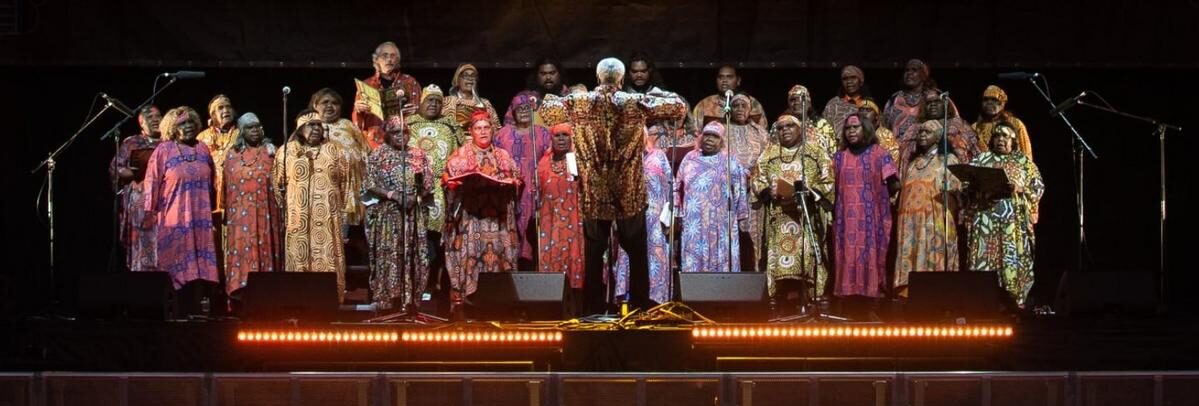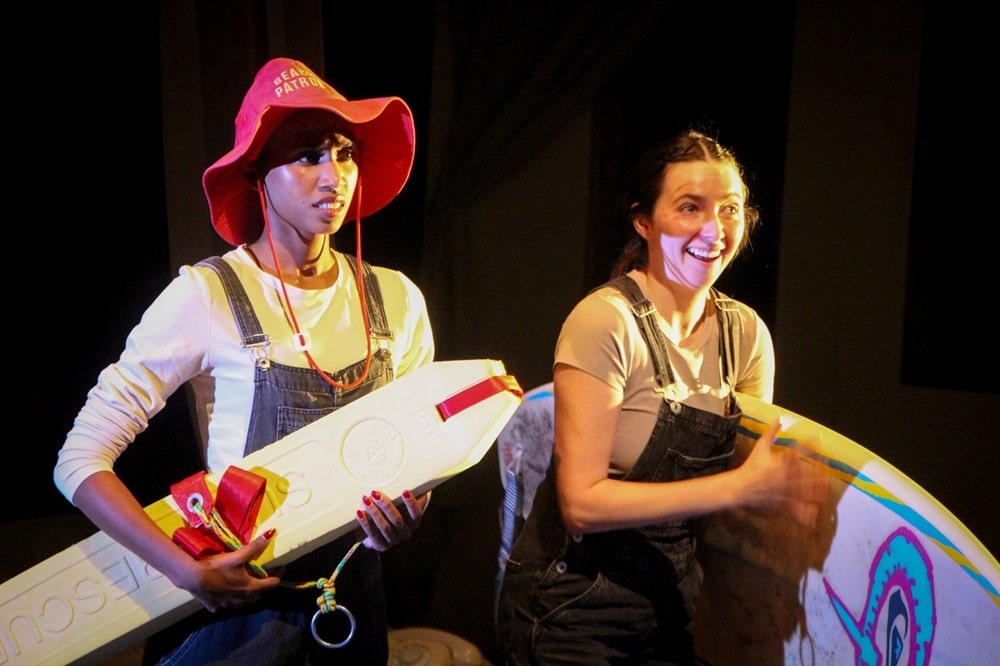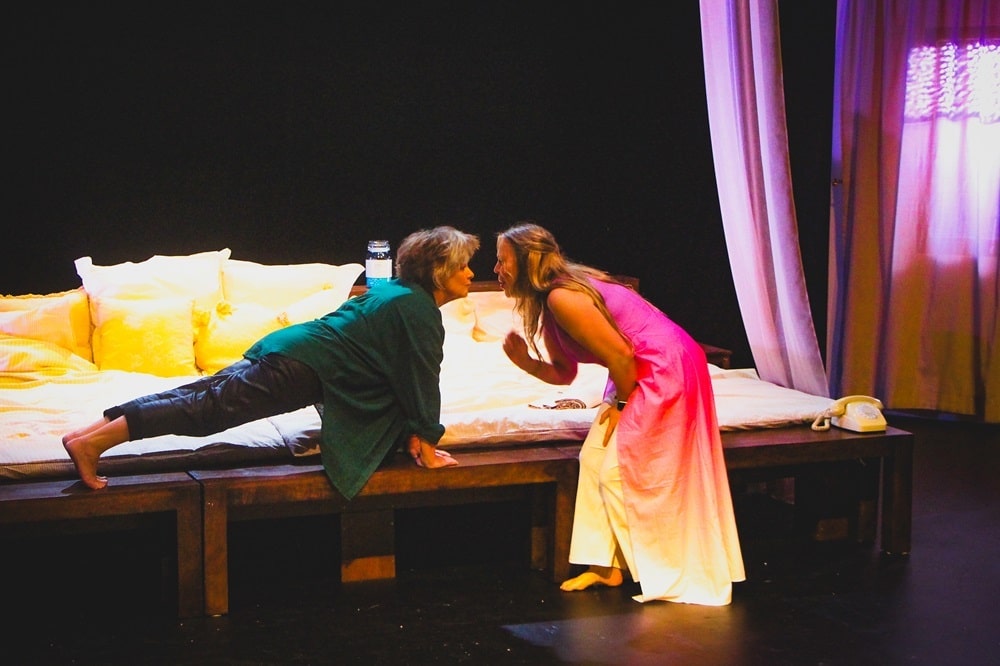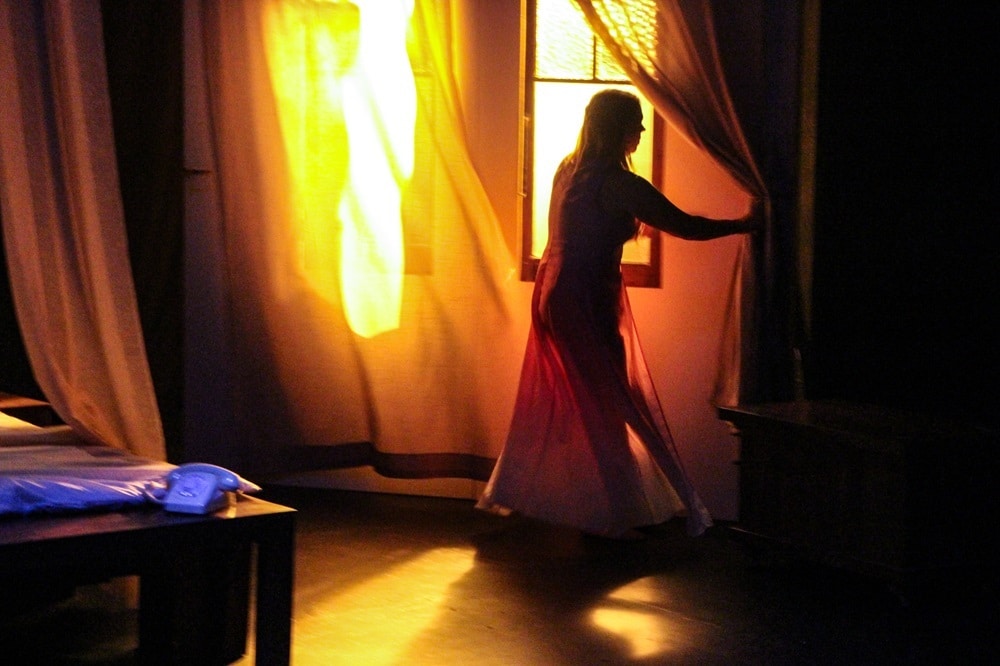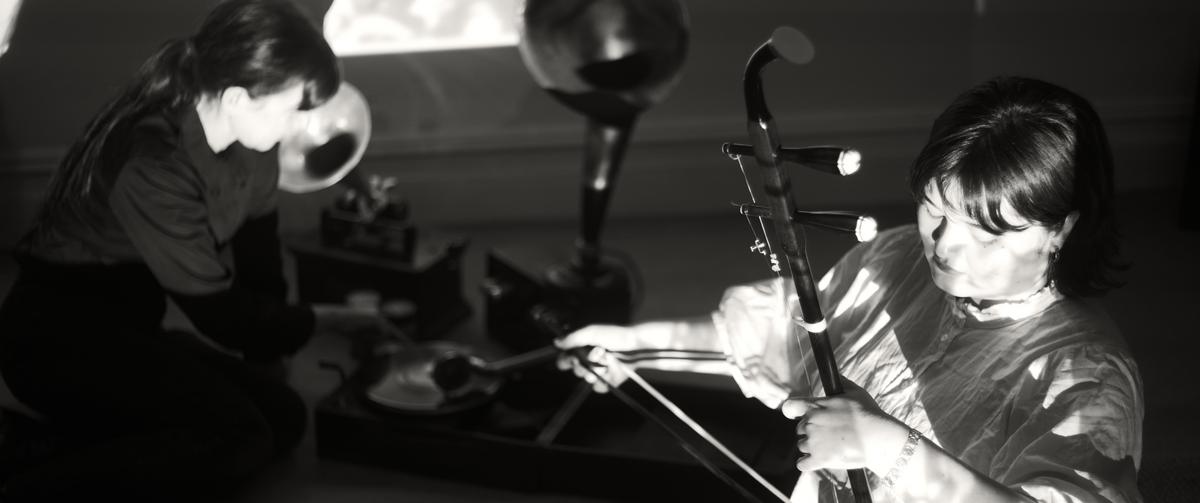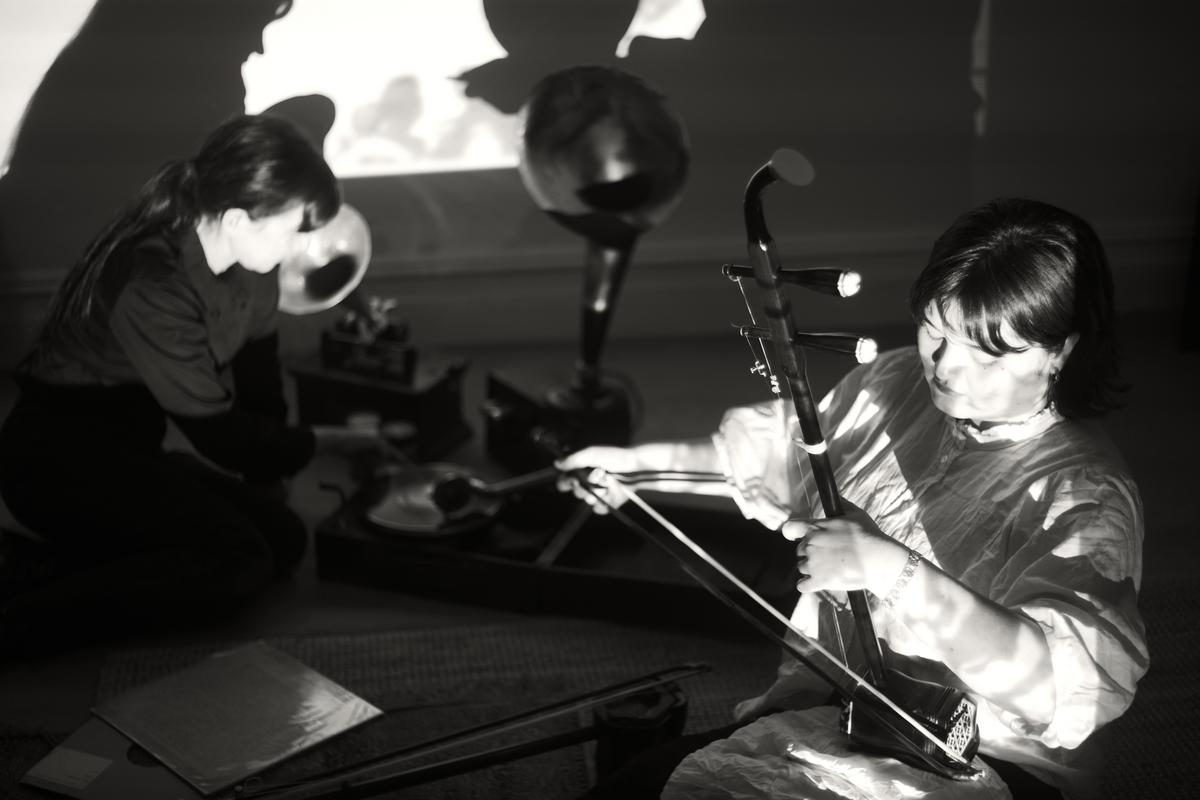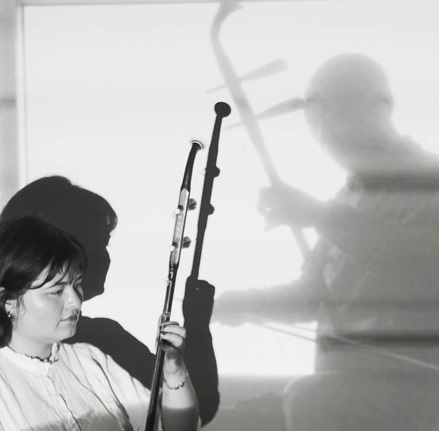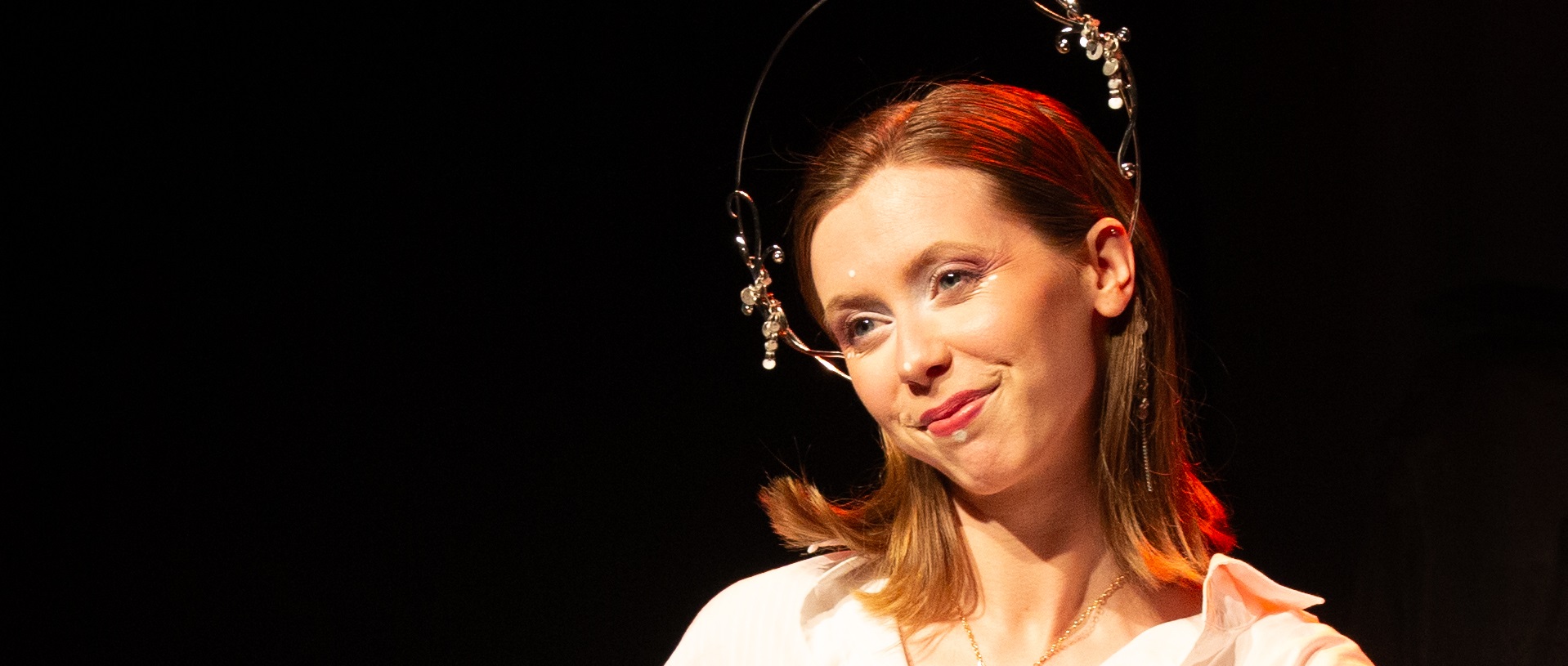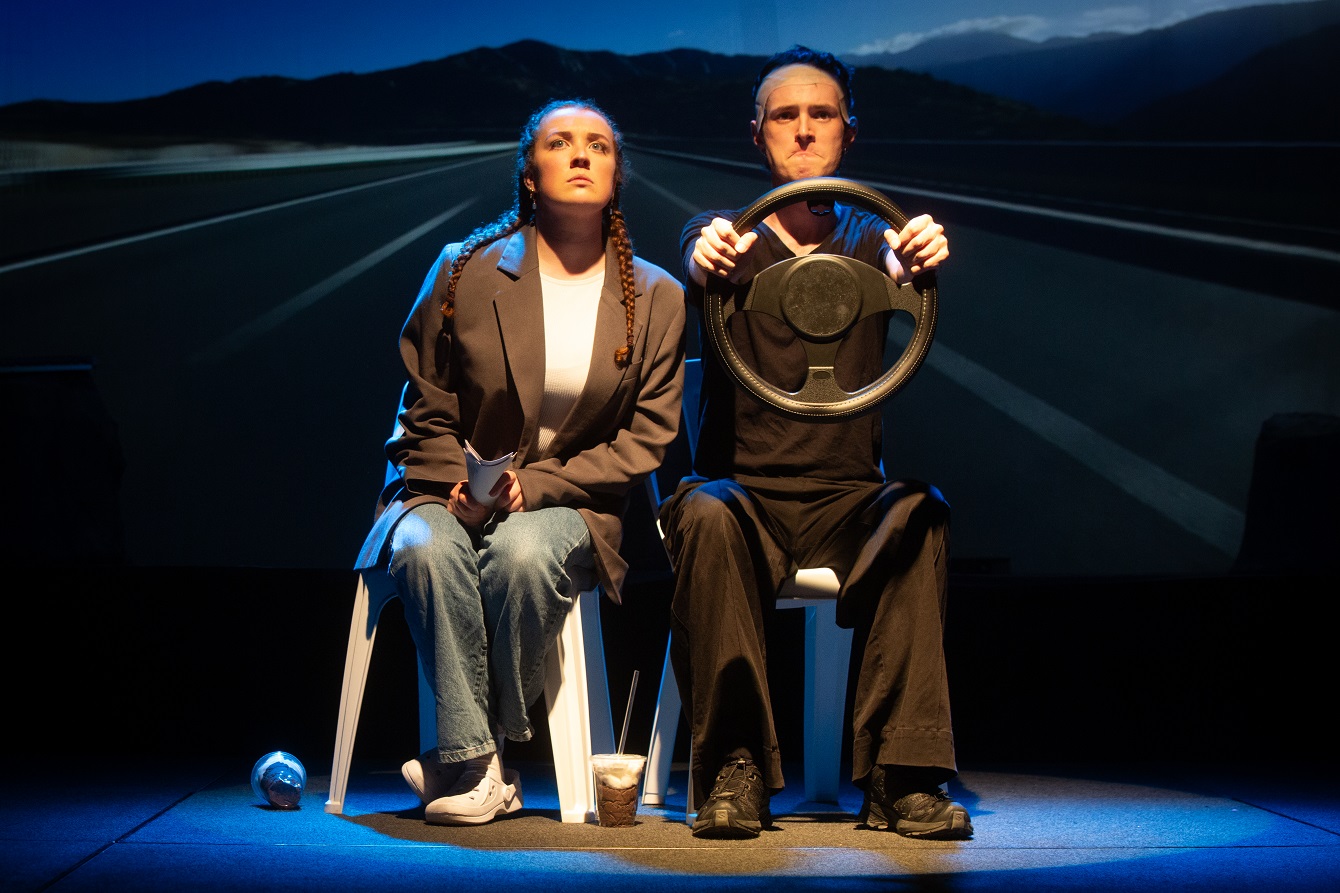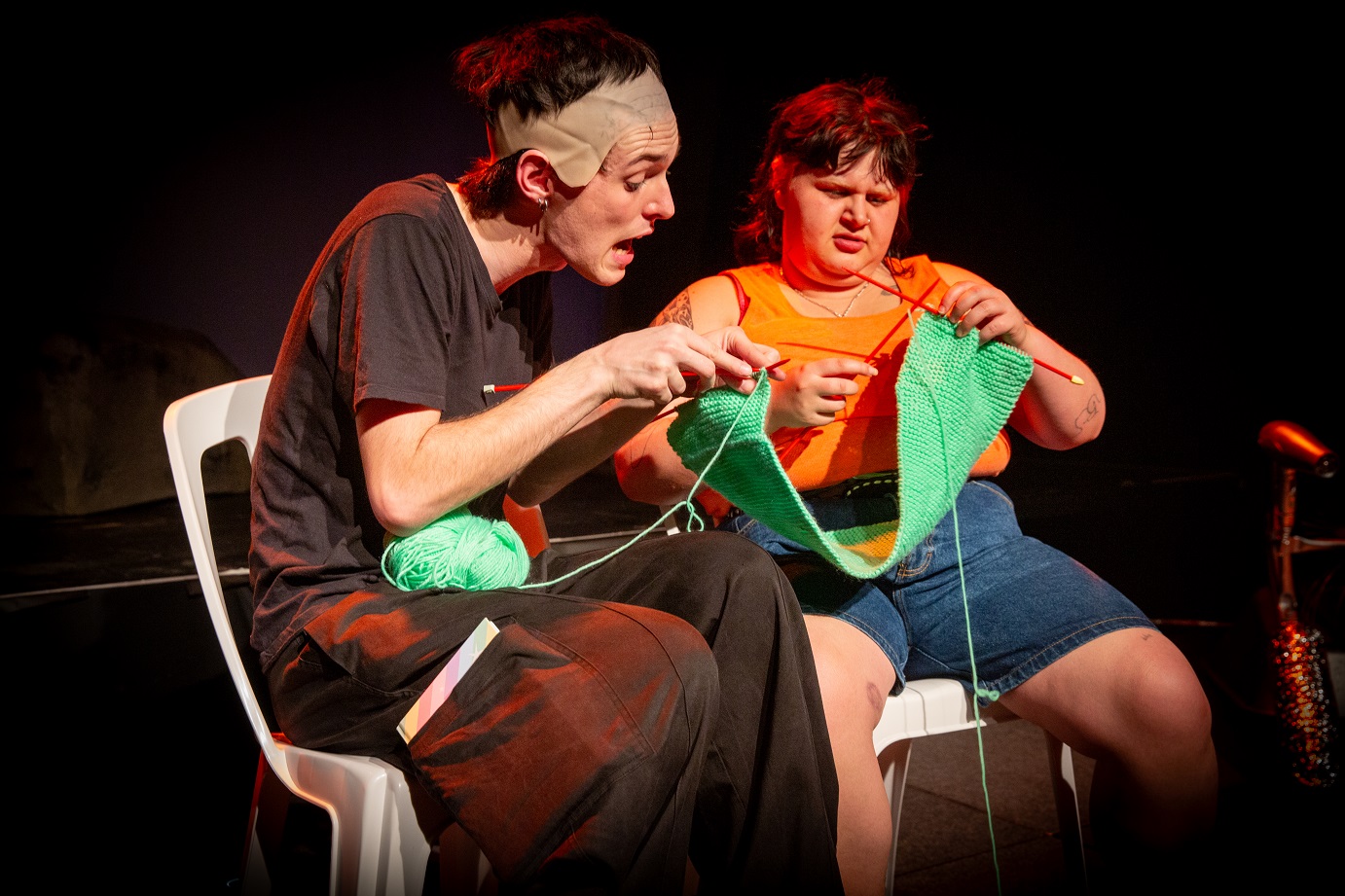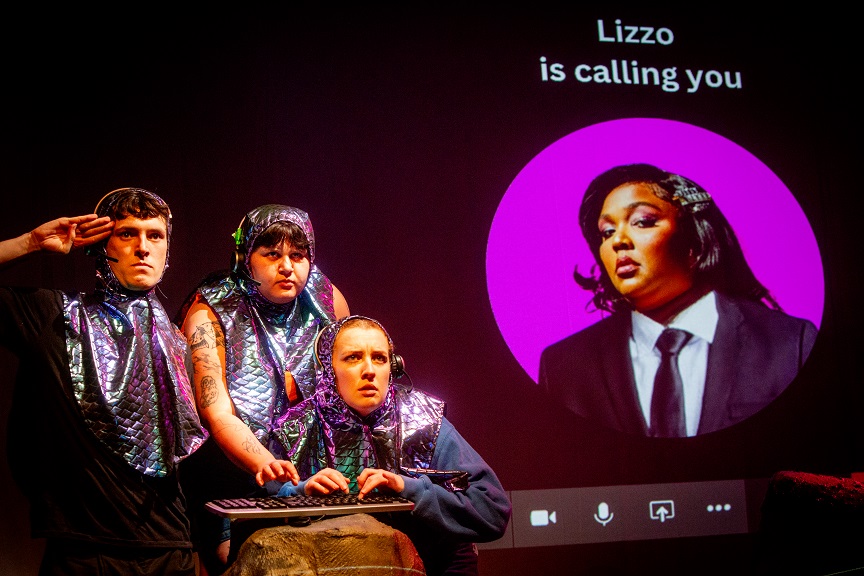“Try connection, try love, try understanding: it will fill your hearts with joy and change your life!” This plea from the heart of Morris Stuart, Artistic Director of the Central Australian Aboriginal Women’s Choir (CAAWC), could be the catchcry of this unique ensemble. The values of connection, love and understanding underpin the choir’s history and allowed two seemingly disparate cultures to find a common ground in singing. German Lutherans arrived in Hermannsburg/Ntaria, NT, in 1877 bringing hymns of faith. They collaborated with Western Arrarnta people to the translate the hymns into Western Arrarnta language. The old musical form from overseas merged with the old language of the interior, and both were preserved in a new form by four generations of Western Arrarnta women, some of whom are singing in the choir today.
The significance of this preservation, particularly for a threatened Aboriginal language, is revealed in Naina Sen’s documentary “The Songkeepers” (2017), available on SBS, which followed the CAAWC’s 2015 journey to Germany to sing sometimes forgotten hymns to the churches that originally sent them, in the languages of Western Arrarnta and Pitjantjatjara 140 years later.
The CAAWC performed at the Melbourne Recital Centre on Sunday 23rd March to a very supportive audience. The choir of 25 members (including four men) have a very distinct sound due to the thick, guttural, nasal quality that is the preferred vocal timbre of Aboriginal musicians. The hymn arrangements from the time of Bach to early Romantic period take on a new life with this tonal quality and use of Central Australian Aboriginal languages. Every song was infused with joy and there was an artlessness about the performance that engaged me in its honesty.
Most of the sacred songs were Lutheran hymns with lyrics translated into Western Arrarnta or Pitjantjatjara. With Aboriginal languages increasingly endangered, this choir and its members are living history. To be able to sing for us in their first language is a privilege that has had to be fought for. It is a continuing conversation about culture and language preservation that the choir invites us to have. Artistic Director, Morris Stuart, reminded us that Areyonga/Utju’s 50 years of bilingual education program in the NT had to be fought for, even to the point of involving the Human Right’s Commission.
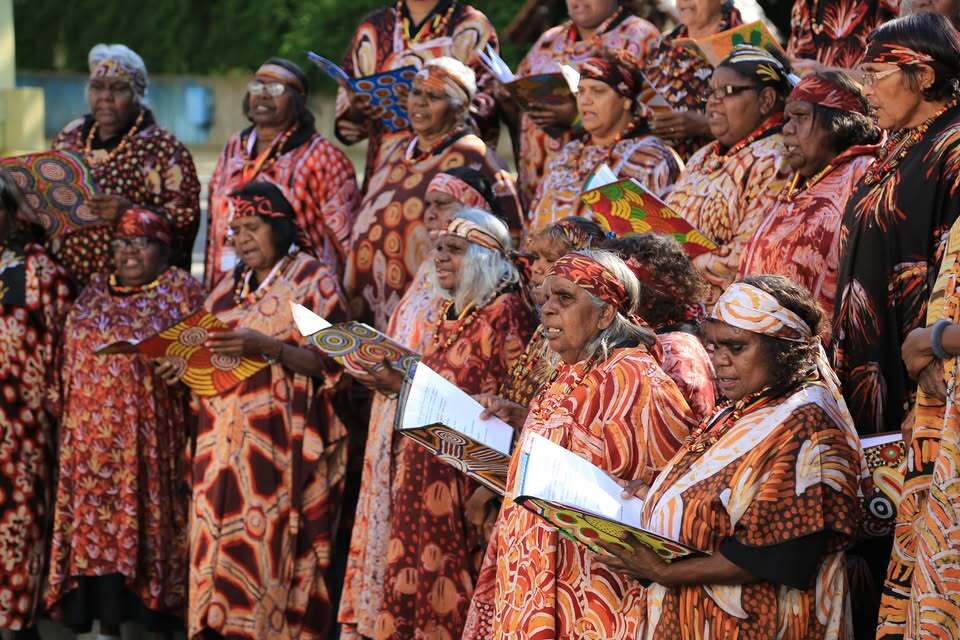
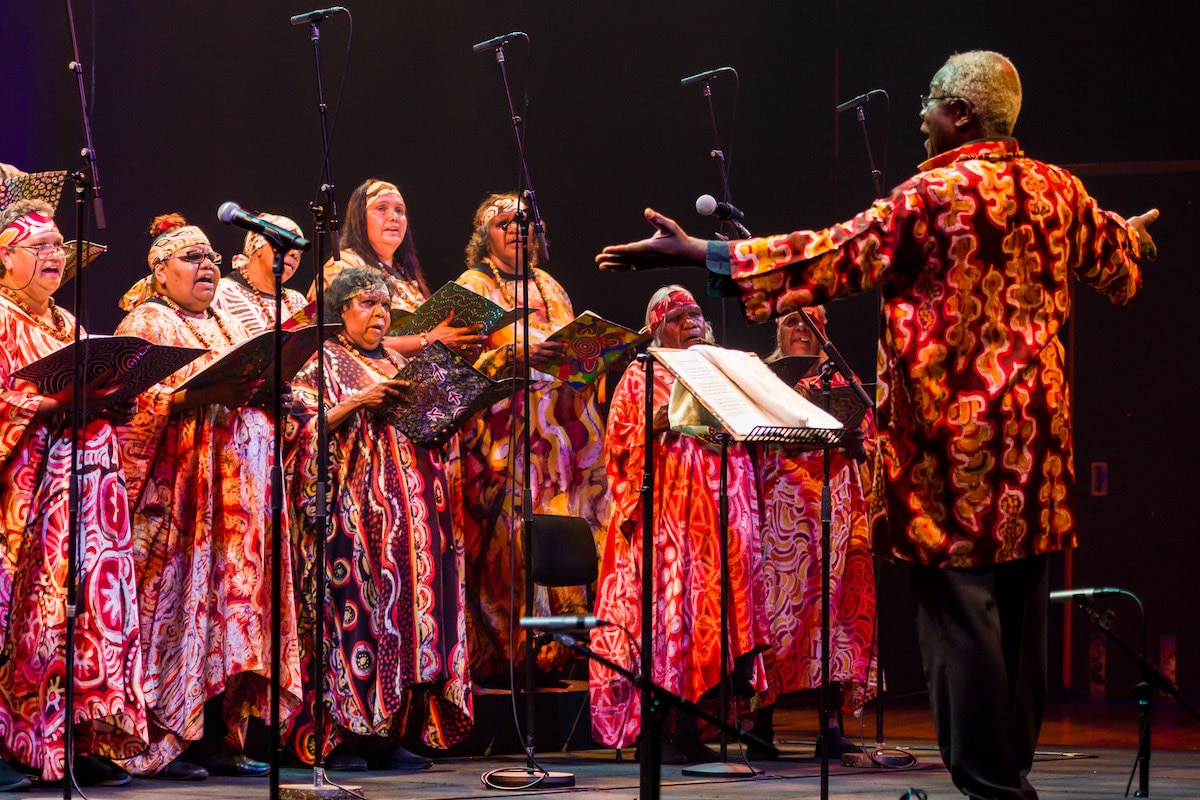
I was particularly interested the two sacred songs in the repertoire that were original compositions. One was written in 1921 by Western Arrarnta elders, Moses Tjalkapurta and Johannes Ntjalka in the style of a traditional ceremonial chant (3- line chant) with modern harmonic elements. Some of the choir members are their descendants.
The other original song was “Godanya” written by Carolyn Windy, her niece Petrina Windy (both choir members) and Adelaidean Holly Webb. It celebrates the Holy Trinity – God the Father, Son and Holy Spirit. To me this song was the highlight of the evening. The influence of hymn was there in its strophic form and diatonic harmony. However, the synergy of words and melody was remarkably seamless and the simple homophonic texture gradually grew into a wall of sound, unified and balanced, with no unnecessary movement. There was a power in its compositional simplicity that moved me. The choir was particularly of one voice in this song – my guess is that it must be one of their favourites – like one person breathing. In a later conversation with Morris Stuart, he agreed that it is the choir’s “tour de force”. It is more original songs like this that I look forward to hearing in the future.
Apart from the early Romantic style hymns and original sacred songs, we were treated to a Bach Chorale conducted by teacher, linguist and author, David Roennfeldt, as well as two German rounds with Western Arrarnta lyrics by Lily Roennfeldt.
There was also a short set of three more familiar songs which were beautifully supported by collborative pianist, Marten Visser. The audience were taught Western Arrarnta words to Kumbayah and invited to sing along. Waltzing Matilda showcased the choir’s storytelling ability and humour. But the most memorable was “We Are Australian”, sung in Western Arrarnta language. We were invited to simultaneously sing the last chorus in English and the connection between choir and audience was palpable. We rose to our feet to give a heartfelt standing ovation.
For me, the word that sums up the CAAWC and this performance is connection. At one point, Stuart asked for the house lights to come up so they could see who they were singing to. They waved to us as they exited the stage singing, and we waved back, our hearts filled with joy, and then went out to meet them in person in the foyer.
The Central Australian Aboriginal Women’s Choir is made up of members of six remote community choirs from Ntaria, Areyonga, Titjikala, Mutitjulu, Docker River and Mission Block, Alice Springs. This tour is produced by Margot Teele from Andrew Kay and Associates Pty Ltd and includes Nuriootpa, Womadelaide, Bunbury, Perth, Canberra, Melbourne, Brunswick, Sydney and Bateman’s Bay.
